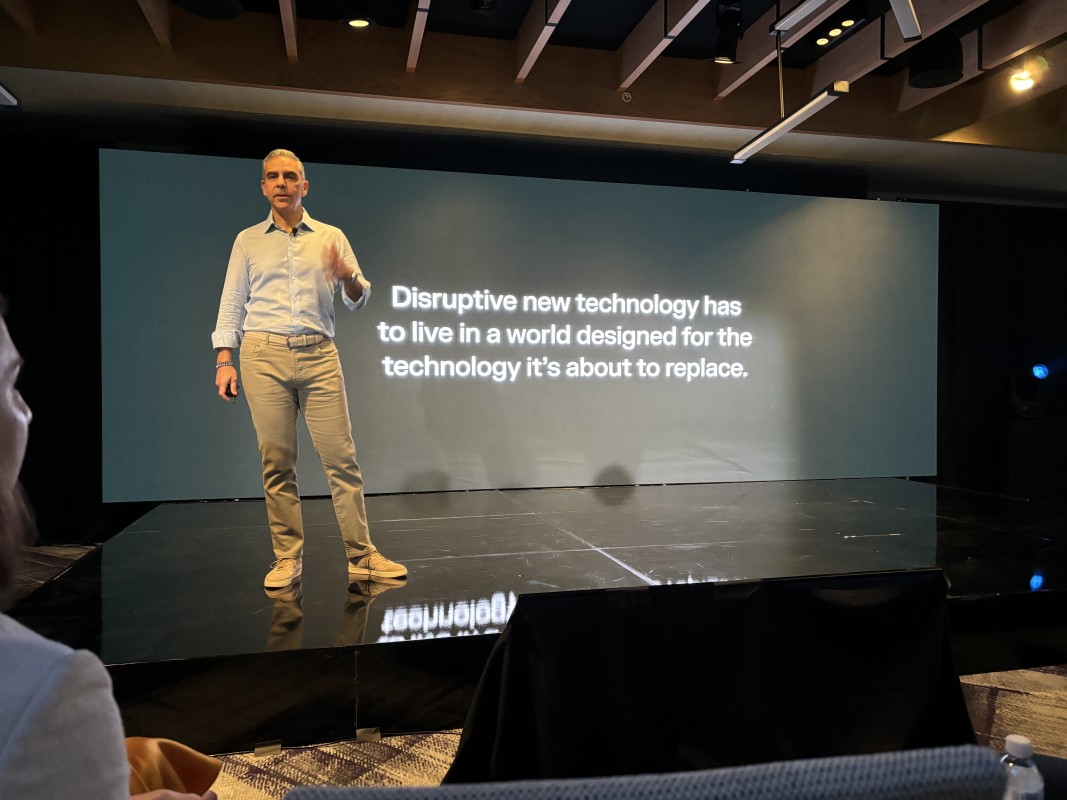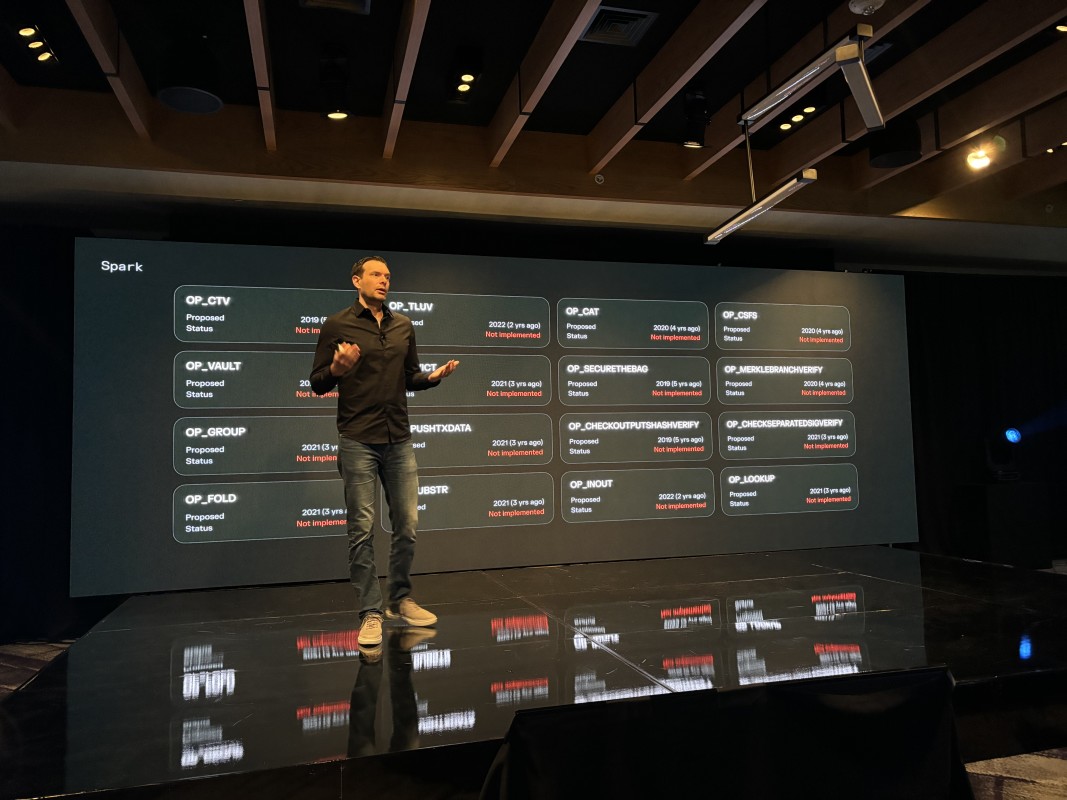During Lightspark Sync, the inaugural partner summit held on Thursday, Lightspark unveiled a range of new products and features designed to facilitate global payments using both bitcoin and fiat currencies.
The company revealed the launch of Spark, an alpha version of a Bitcoin Layer 2 solution that operates seamlessly with Lightning, making it more affordable to onboard users onto a non-custodial Bitcoin layer.
Additionally, new features for UMA, Lightspark’s open-source and regulatory compliant payment solution, were announced, enabling users to send money with the same ease as sending an email.
With UMA Extend, the Lightning Network acts as a bridge connecting traditional banks worldwide, while UMA Auth and UMA Request empower UMA users to tip, pay subscription fees, and transact with merchants within applications.

Spark — Lightspark’s Bitcoin Layer 2
Spark is a Layer 2 protocol for Bitcoin that utilizes statechain technology, allowing users to hold fractions of bitcoin off-chain and transfer them by sending private keys to other users instead of signing transactions with those keys.
Lightspark developed Spark to improve the user onboarding experience to the Lightning Network, which typically requires an on-chain transaction for each payment channel, locking up a specific amount of bitcoin for sending and receiving transactions.
This layer 2 solution was primarily created in response to the challenges the Lightspark team faced while trying to design a non-custodial Lightning wallet.
“Self-custodial Lightning wallets, particularly when scaled, are just not feasible,” stated Lightspark CTO Kevin Hurley in an interview with Bitcoin Magazine.
“When you’re managing billion-user channels, fees can skyrocket, and block space can become congested. It’s not sustainable to lock up liquidity for each individual user,” he added.
Hurley also noted that Lightspark sought to avoid waiting for Bitcoin opcodes (like CheckTemplateVerify or TapleafUpdateVerify) that would facilitate cheaper Lightning channel openings, opting instead to provide users with a non-custodial solution right away.
Thus, Spark offers users affordable, instantaneous payments along with a permissionless, unilateral exit back to the Bitcoin base layer. It also supports offline receiving—allowing users to receive bitcoin even when their device is offline.
In addition to statechains, Spark takes advantage of atomic swap technology. Its architecture resembles that of Mercury Layer, enabling off-chain ownership transfers of Bitcoin UTXOs while offering near-instant and fee-free transactions, according to Hurley.
“Mercury has several inherent limitations that we have overcome,” elaborated Hurley.
“In Mercury, for instance, only whole UTXOs can be transferred, and there are time constraints requiring a return to on-chain within a specified timeframe, which limits transaction capacity. Furthermore, we incorporate elements such as connector transactions from Ark, though, aside from that, we have distinct differences,” he explained.
“It’s challenging to find a direct comparison, as it integrates various components that likely differ from those chosen by others.”
In addition to bitcoin, users can issue and utilize stablecoins on Spark. Stablecoins can also be issued through Taproot assets, LRC-20, or RGB on the base layer and subsequently transferred to Spark.
Uniquely, assets on Spark are fully UMA enabled.
“Now, non-custodial users can send directly to the bank accounts of UMA Extend users,” emphasized Hurley, referring to one of the newly introduced functionalities of UMA addresses.

UMA Extend
UMA Extend integrates the Lightning Network with traditional banking systems, enabling users to conduct international bank transfers in a matter of seconds. This novel solution allows any UMA Extend user to send instant cross-border payments using Lightning, as effortlessly as sending an email.
“It’s designed to enhance money movement across various currencies,” stated Nicolas Cabrera, VP of Product at Lightspark, to Bitcoin Magazine. “For instance, I could be in Brazil sending my local currency, the Brazilian real, to a recipient in Europe who wishes to receive euros, or to a person in the US who prefers USD.”
The Brazilian reals are drawn from the sender’s bank account, converted into sats by the bank (or through an entity like Zero Hash if the banks are unable to handle crypto), and subsequently delivered to the recipient’s bank, where they are reconverted into euros, USD, or the local currency of the recipient. This entire process takes roughly 30 seconds, marking a significant improvement over the two to three days typically required for international money transfers to settle.
“This represents the first connection of the Lightning Network with traditional banking routes and systems,” Cabrera added.
UMA Extend employs Real-Time Payments (RTP), facilitating real-time payments for federally insured depository institutions in the United States and comparable services worldwide. All banks across the US that utilize RTP support Extend. Currently, Lightspark’s partners provide on- and off-ramps for 44 fiat currencies across over 100 countries.
The traditional financial institutions engaged in these transactions determine the applicable fees, typically ranging from 0.25% to 0.5% — significantly lower than the 6.35% fees that customers often incur for traditional international remittance payments.
Individuals interested in utilizing UMA Extend can do so through this link.
UMA Auth
At the summit, Lightspark also introduced UMA Auth, which incorporates OAuth (Open Authentication) technology—the backend mechanism that allows users to sign into third-party apps or websites using Google or Facebook—an open-standard authorization protocol that grants users secure access to a website or application.
UMA Auth was developed utilizing Nostr Wallet Connect (NWC), a protocol created by the Alby team. NWC now supports UMA functionalities, including cross-currency transactions and client app registration.
“We aimed to broaden UMA’s application beyond just wallets,” explained Shreya Vissamsetti, a member of the Lightspark engineering team focused on UMA, in an interview with Bitcoin Magazine.
“UMA Auth is an extension on top of UMA that enables direct payment integration within applications. The concept is akin to OAuth but is specifically designed for financial transactions,” she added.
“Users simply input their UMA address, enabling a direct connection to their Lightspark wallet from within the app, allowing seamless communication and funds transfer directly from the application.”
UMA Auth enables various transactions, from tipping favorite artists to paying a subscription fee to sending money to friends through messaging apps.
“For instance, if I’m listening to Taylor Swift,” Vissamsetti began.
“I could link my UMA account, and if my favorite song is playing, I could just tap a button to send her a small tip,” she elaborated.
“Tipping is one of the primary applications we’re targeting with this product,” Cabrera noted. “Lightning serves as a solid foundation since it facilitates microtransactions.”
UMA Request
UMA Request is yet another innovative aspect of UMA, allowing any UMA user to solicit payments from another user.
Merchants can utilize UMA Request to generate invoices for products sold or services rendered, presented as a QR code. UMA Request also accommodates zero-sum invoices, enabling recipients to pay any amount of their choosing.
“Previously with UMA, the sender initiated the payment; however, we’ve inverted that process,” explained Vissamsetti.
A distinctive feature of UMA Request is that it guarantees both parties involved in the transaction receive a record of the transaction.
UMA Request facilitates online purchases, especially across borders, making it easier and more cost-effective than using credit cards.
Looking Ahead
Lightspark’s CEO David Marcus, who previously served as the president of PayPal, believes that it is only a matter of time before more banks and platforms begin to adopt technologies like UMA Extend, UMA Auth, and UMA Request.
“Ultimately, constructing a more efficient network that expedites global money movements 24/7 in real-time without blackout periods will naturally shift where money flows, necessitating adaptation from financial institutions and ecosystem players,” Marcus explained to Bitcoin Magazine.
In relation to Spark, the Lightspark team is actively seeking user feedback to enhance the product.
“We are committed to fully engaging with the community,” stated Hurley.
“Our goal is to keep this project transparent, entirely open-source, allowing anyone to audit and even create their own versions as needed,” he added.
“We aspire to foster a collaborative environment where the community can contribute, submit pull requests, and assist in the identification of improvements.”
Christina Smedley, co-founder and Chief Marketing and Communications Officer at Lightspark, shared Hurley’s vision as she discussed the new functionalities of Spark and UMA.
“Our objective is to [onboard] the next billion or several billion users,” Smedley told Bitcoin Magazine, “underscoring the importance of ensuring our initiatives are open-source and community-driven.”








